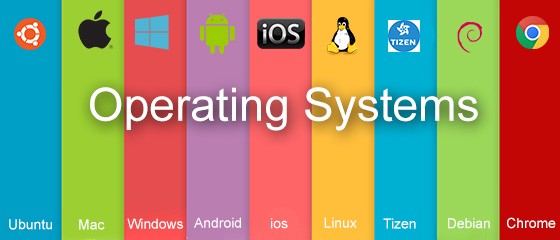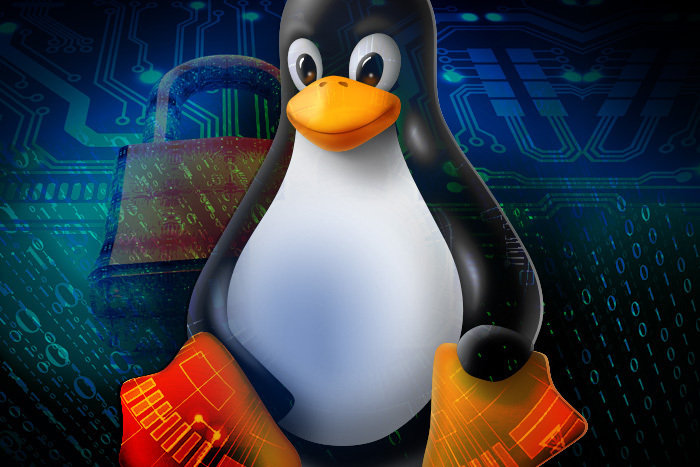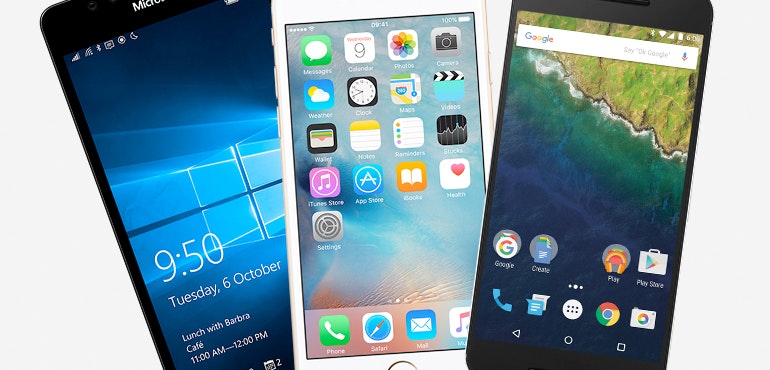An operating system simply refers to a type of software that acts as an interface between the computer hardware and the end user. In order for a computer to function it needs to have an operating system. This is an environment or a platform that will enable applications such as MS word, chrome and games run and perform various tasks. The greatest advantage with the operating system is that it allows the user to communicate with computer without necessarily having to understand the computer language. It is never possible to use a computer or mobile device without the presence of an operating system.
Examples of operating systems
There are different types of operating systems available in the market today. There are operating systems that are specifically designed for computers while there are operating systems that are specifically designed for mobile phones. Some of the examples of operating systems include Windows, Android, iOS, Mac OS, Linus, Ubuntu, Chrome OS and windows phone OS.
Windows operating system is the mother of all operating systems. It was released in 1985 and is available in several versions. It is user friendly and is responsible for the development of personal computing. Mac OS was developed specifically for Apple products and its line of computers. Unix is a multi-user operating system that was developed during the 1970s and is one of the first operating systems to be written in c language. The operating system is very popular due to its adaptability and flexibility. Linux operating system was designed specifically to provide users with a free and low-cost alternative to personal computing. Linux has the reputation of being very efficient and fast.
History
The first operating system was developed back in 1950s to manage tape storage. General motors were the first company to implement OS in their early 1950s for their IBM 701. The technology behind operating systems have been developing over time where operating systems started to use disks in themed 1960s.by the late 1960s the first version of Unix OS was developed. DOS was the first operating system to be developed by Microsoft and it was built back in 1981. The present OS windows came to existence back in 1985 and was paired with MS-DOS.
Functions of an operating system
An operating system performs different types of services for an application. In the case of multitasking where different programs have to run at the same time the operating system determines the kind of applications that should run and the amount of time that each application is given before moving to another application. The operating system manages the sharing of internal operations among several applications. It alerts the interactive user regarding the status of each application as well as any errors that might have occurred. It also handles input and output from attached hardware devices like printers, hard disks and dial-up ports. As for computers that are able to provide parallel processing, the operating system simply manages the way in which the programs run from one processor to another.
Other functions of a computer include the security modules which protect the data and information of a computer against malware and authorized access. They also have a command interpretation module which interprets and process commands given by the system resources. Operating systems also participate in resource management where the OS creates and deletes processes as well as provide mechanism for synchronization and communication of processes.
Types of operating systems
Mobile operating systems allow smartphones, tablets, PCs and other mobile devices to run applications and programs. Common examples of mobile operating systems include Apple iOS, blackberry OS, Google Android and Windows 10 mobile. An operating system that is embedded is designed for use in computers with larger systems such as traffic lights, cars ATMs, point of sale terminal, elevators, digital cameras, airplane controls, digital media receivers, GPS navigation systems, smart meters and digital televisions.
Network operating systems are computer systems that are designed to primarily support personal computers, workstation and is certain cases old terminals that are connected to a local area network. Real time operating system guarantees that certain capabilities within a specified time constraint is met for instance, an operating system can be developed so as to ensure that certain objects are available for a robot during assembly.
Kernel
The central component of an operating system is called a kernel. The main job of a kernel is to manage communication between hardware and software. The kernel forms the nucleus of a computer and makes communication between the software and hardware possible. The innermost part of an operating system is the kernel while the shell forms the outer part. The kennel features process synchronization, low level scheduling of processes, context switching as well as inter-process communication.
Types of kernels
There are several types of kernels available in the market today one of them being monolithic kernel. Monolithic kernel refers to a single block or code of program that performs the required services that is offered by an operating system. It has a simplistic design that creates a distinction between communication layers of hardware and software. Microkernel on the other hand manages all the system resources. Through this type of kernel, the services are implemented through different address space. The services of the user are stored in an address space so that it helps to reduce the size of the kernel and operating system.
Advantages of operating system
There are a lot of advantages that are associated with an operating system. Some of the greatest advantages include being able to hide details of hardware by creating an abstraction. It also gives one the ease and privilege of using the graphical user interface. The operating system basically provides a platform where applications and programs run smoothly and efficiently. It acts as an intermediary between applications and hardware components. The operating system also provides the user with resources that are easy to use which can be describe as an intermediary between the hardware and software system.


